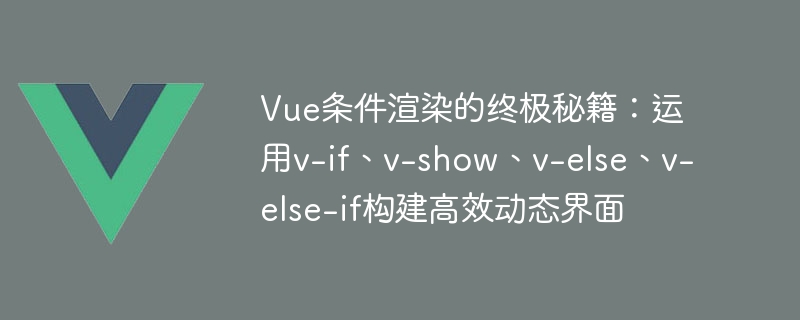

Vue is a popular JavaScript framework that provides many useful instructions to help developers build dynamic interfaces. Among them, conditional rendering is an important feature in the Vue framework. By using instructions such as v-if, v-show, v-else, and v-else-if, we can dynamically show or hide elements based on conditions to build efficient dynamic interfaces. This article explains how to use these directives to implement conditional rendering and provides specific code examples.
Code example:
条件为真,渲染该元素
In the above example, when isShow is true, the p element containing the text "Condition is true, render this element" is rendered. When isShow is false, the p element will not be rendered.
Code example:
条件为真,显示该元素
In the above example, when isShow is true, the p element will be displayed; when isShow is false, the p element will be hidden.
Code example:
恭喜,你及格了!
很遗憾,你需要补考。
抱歉,你不及格。
In the above example, depending on the value of score, different text will be displayed.
Summary:
By using instructions such as v-if, v-show, v-else and v-else-if, we can flexibly build dynamic interfaces based on conditions. In actual development, selecting appropriate conditional rendering instructions according to specific needs can improve the performance and user experience of the interface. I hope the code examples provided in this article can help readers better understand and apply these Vue conditional rendering instructions.
The above is the detailed content of The ultimate secret to Vue conditional rendering: Use v-if, v-show, v-else, v-else-if to build an efficient dynamic interface. For more information, please follow other related articles on the PHP Chinese website!